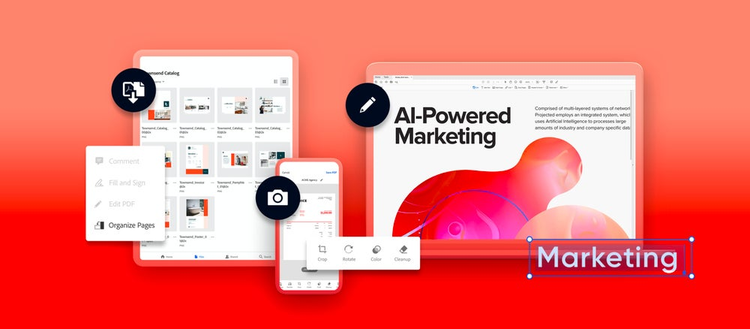Innovation unwrapped: Nathan Graham

When Nathan Graham started at Adobe back in 1990, he was part of the pioneering team that created Acrobat and PDF. Today, it may come as a surprise to learn that Nathan’s team just helped launch a new create and compress PDF feature. Nathan’s career with Adobe has been a long one, starting at the company when there was less than 600 employees, and spanning multiple product launches since then. So, what sparked Nathan’s interest in technology and how did he start his career at Adobe?

Like many Adobe employees, Nathan grew up—and still is—surrounded by the arts. He took pencil drawing and pottery classes, and a little later he became interested in photography. But when Nathan thinks back to the moment he pivoted to the tech side of things, he thinks of his 3rd grade teacher, “I had a math teacher who was really strict, and I never wanted to be on her bad side. Because of that, I got really focused on mathematics. Later in High School, I got one of the early Texas Instruments calculators, where you can program it. I thought it was the coolest thing. All these things set my path up to tech.”
After going into college studying Mechanical Engineering and graduating with a Master’s Degree, he joined Xerox early in his career. When he was looking for his next career jump, Nathan remembers his two choices clearly. “There was this chance to join a “shiny” new startup and work on a project that I thought was perfect for me. And then there was Adobe. I didn’t really know what they did at first, but once I talked to the recruiters, one thing was really clear and that was that really smart people were working here. And I’m a firm believer that if you work somewhere where people are smarter than you, it’ll only bring you up.”
After learning more about Adobe and its graphic technology, Nathan’s art background was triggered. It resonated with him on a personal level, and he took that leap to join Adobe in its budding days, working on early versions of Adobe Illustrator. Nine months later, he was asked to join the Acrobat project, where despite a short “sabbatical” on another team, Nathan’s been ever since.
The Acrobat years
When Nathan first started on the Acrobat team, it was made up of about a dozen people. It was when desktop publishing was just coming together and Adobe CEO John Warnock was working on a project that would optimize PostScript for printing. “It’s funny how an idea doesn’t always feel groundbreaking at the time, because it does something so fundamental today,” Nathan mused.
This would soon lead Nathan to work on a printer driver that created PDF files instead of printing. “In the beginning one of the few ways to create a PDF was with my driver, which I later named PDFWriter. This is one of my biggest achievements.”
Since then, Nathan’s worked on several iterations of PDF and Acrobat, watching it go from CDs, then to e-mail, and now to the cloud. In his role as Senior Computer Scientist and Scrum Master on his team, the focus is now on getting fundamental PDF features onto Adobe.com for a frictionless experience using the Document Cloud web app, where customers can convert their word docs, presentations and more to PDF. “It’s kind of like déjà vu. Wasn’t I working on converting word files to PDF more than 25 years ago?” Nathan laughed.
Lessons learned
As with anyone who’s had such an extensive career, Nathan has some advice for those who are looking to be more innovative, “I would say that if you have an idea that you want to pursue and you don’t have the time or nobody will listen, keep that idea. Wait until the stars align. Just keep spending a little time on it at regular intervals. Be patient. You’ll never know when the opportunity will come along to execute that idea. Hang in there.”
And for those who are looking to one day consider a job opportunity at Adobe and are wondering what exactly has kept Nathan here for 3 decades now, his answer is simple, “When I started, I told myself that I’d probably stick around as long as John and Chuck are CEOs, because I believed the culture of the company would change without them. But to my surprise, it didn’t really change much. The core values are still the same, and the people I work with—old and new—are still the smartest and nicest people around.”
Interested in a career at Adobe? Explore opportunities on our career site.